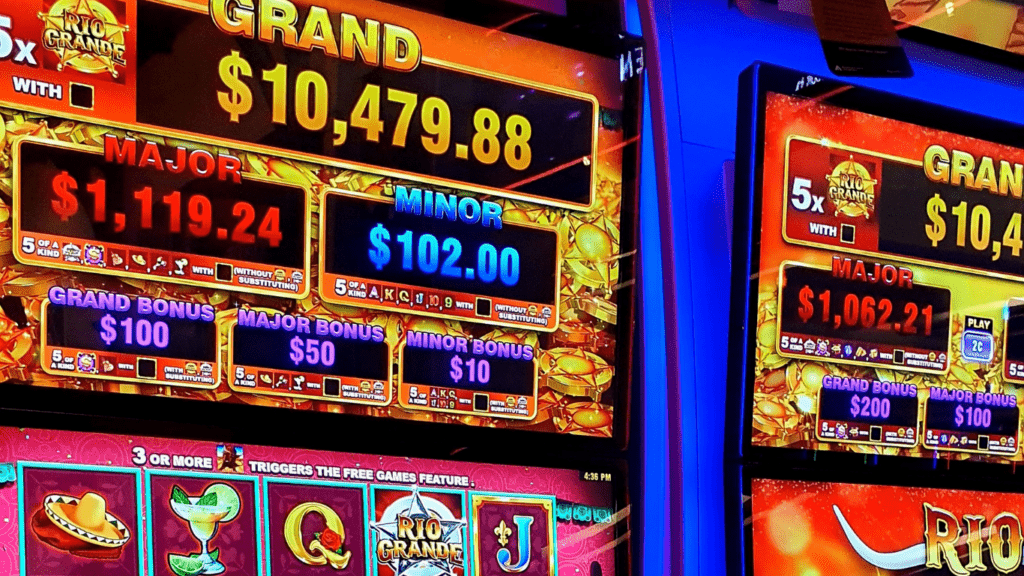The Evolution of Online Casinos
Online casinos have come a long way since their inception in the mid-1990s. Initially, they offered simple table games like blackjack and roulette. Today, the landscape has transformed dramatically. Let’s explore key milestones in this evolution.
Early Beginnings
The first online casinos emerged in 1996, providing limited options and basic graphics. These early platforms operated on rudimentary software and had minimal security features. Despite these limitations, they garnered a significant user base.
Technological Advancements
The late 2000s marked a major shift, driven by advancements in internet speed and computer graphics. Developers integrated more sophisticated software, enabling better gameplay and visuals. Enhanced encryption methods improved security, making online gambling safer.
Mobile Gaming
With the proliferation of smartphones in the early 2010s, mobile gaming became a significant trend. Casinos developed mobile-friendly websites and apps, allowing users to play anytime, anywhere. This convenience attracted a broader audience.
Live Dealer Games
In mid-2010s, the introduction of live dealer games bridged the gap between online and physical casinos. Players could interact with real dealers in real-time, streamed from professional studios. This feature added a new layer of realism and excitement.
Integration of Cryptocurrencies
Cryptocurrencies like Bitcoin started being accepted by online casinos around 2015. They offered faster transactions and enhanced privacy, appealing to tech-savvy users. This integration marked a significant development in the financial aspect of online gambling.
Social Gaming Elements
Social gaming elements became prevalent in late 2010s. Online casinos incorporated features like leaderboards, achievements, and multiplayer modes. These elements made the gaming experience more interactive and engaging, fostering a sense of community.
Virtual Reality
The latest advancement involves virtual reality (VR). VR aims to create an immersive, lifelike casino experience from the comfort of one’s home. Players can explore virtual casino floors, interact with other users, and enjoy an unprecedented level of engagement.
Evolution of online casinos shows no signs of slowing down. Each technological leap adds new dimensions to user experience, making online gambling more thrilling and accessible.
Current State of Virtual Reality in Gambling
Virtual reality has revolutionized the online gambling landscape, delivering immersive experiences to players. Here’s a closer look at the popular VR casino games and the key players in the industry.
Popular VR Casino Games
Several VR casino games have captured players’ attention:
- Poker VR: Games like PokerStars VR let players interact in a virtual poker room, mimicking the experience of a physical casino.
- Slots VR: Titles such as Gonzo’s Quest VR offer immersive slot gameplay, with 360-degree graphics and interactive elements.
- Roulette VR: Most platforms include VR roulette, delivering an authentic gaming experience through realistic graphics and physics-based mechanics.
- Blackjack VR: Games like Blackjack Bailey VR provide a lifelike blackjack environment with interactive dealer avatars and customizable tables.
Key Players in the VR Casino Industry
Several companies lead the way in VR casino innovation:
- NetEnt: Known for pioneering efforts, NetEnt has developed several VR slots and table games, enhancing virtual casino experiences.
- Microgaming: This industry giant has ventured into VR applications, creating immersive VR versions of popular casino games.
- Oculus (Meta): Providing the hardware backbone, Oculus facilitates high-quality VR content consumption, crucial for an authentic VR casino experience.
- SlotsMillion: As one of the first VR casinos, SlotsMillion offers a broad range of VR slot games, setting high industry standards.
These key players continue driving forward the integration of VR in gambling, pushing boundaries and setting new benchmarks for the future of virtual realities in online casinos.
Technological Advancements Driving VR Casinos

Innovative technologies are redefining online casinos, providing players with increasingly realistic environments and experiences. Key technological advancements driving VR casinos include improved graphics and immersion, and enhanced user interfaces.
Improved Graphics and Immersion
Enhanced graphics make VR casinos more immersive, providing lifelike environments. Advanced rendering techniques like real-time ray tracing contribute to realistic lighting and shadow effects. High-definition textures enhance visual details, while 3D audio complements the immersive experience by simulating real-world soundscapes. The latest VR headsets, like the Oculus Quest 2 and HTC Vive Pro, support higher resolutions and wider field-of-view (FOV), further intensifying the illusion of being in a physical casino.
Enhanced User Interfaces
User interfaces have evolved to become more intuitive and interactive. Hand-tracking technology enables players to use natural gestures to interact with virtual elements, replacing traditional hand controllers. Eye-tracking technology enhances user interaction by allowing easy menu navigation through gaze control. Haptic feedback provides tactile sensations, simulating the feeling of handling cards or pulling a slot lever. Voice recognition technology allows players to communicate with virtual dealers and other players, enhancing social interaction within the VR casino environment.
Benefits of VR Casinos for Players
VR casinos offer several advantages, enhancing the gameplay and overall user experience.
Realistic Gaming Experience
VR casinos provide a highly realistic gaming experience. Players can walk around virtual casino floors, interact with slot machines, and sit at poker tables. Advanced graphics and 3D modeling recreate the feel of a real casino. For example, VR casinos use real-time ray tracing, generating lifelike lighting and shadows. Immersive soundscapes and 3D audio contribute to the convincing atmosphere, making the entire experience more engaging and enjoyable.
Social Interaction and Community Building
One of the standout features of VR casinos is the potential for social interaction. Players can chat with others, form virtual friendships, and even join multiplayer games. Avatars, representing each player, enhance the social aspect by allowing gestures and facial expressions. Features like voice chat and private rooms enable deeper interactions and community building. These social components transform online gambling from a solitary activity into a shared experience, enriching the overall engagement.
Challenges and Limitations
Integrating virtual reality into online casinos faces significant challenges and limitations.
Technological Barriers
VR in online casinos requires advanced hardware, like VR headsets and powerful computers. While prices are falling, many players still consider the investments high. Moreover, the VR experience relies on strong internet connections to ensure smooth gameplay without lags. As not all regions offer high-speed internet, this can limit the audience. Finally, creating realistic and immersive gaming environments demands considerable resources from developers, which can slow down the adoption of VR in the industry.
Regulatory and Legal Issues
VR casinos also deal with complex regulatory and legal landscapes. Different jurisdictions have varying laws about online gambling, and VR technology introduces new elements that regulators must consider. For example, ensuring fair play and preventing cheating become more complicated in a virtual environment. In addition, the anonymity of VR users can make it harder to uphold anti-money laundering (AML) and know your customer (KYC) regulations. These factors pose significant obstacles to the widespread adoption of VR in online gambling.
The Future Potential of VR in Online Casinos
VR is poised to redefine online casinos, offering immersive experiences that traditional formats can’t match.
Innovations on the Horizon
Several noteworthy innovations are expected soon. Haptic feedback tech, which provides touch sensations, will enhance realism. Players, for instance, might feel the weight of poker chips or the spin of a roulette wheel. Additionally, AI-driven virtual dealers will offer personalized interactions. These dealers can adapt to player behavior, making games more engaging.
Another significant innovation is the integration of augmented reality (AR) with VR. This hybrid approach will allow for an enriched gaming environment. Players can interact with virtual objects in their physical space, creating a more complex and engaging experience.
Market Growth and Projections
Market analysts forecast substantial growth for the VR casino sector. According to Statista, the VR gaming market can reach $2.4 billion by 2024. This growth links closely to increased VR headset sales, which are projected to hit 68 million units by 2023.
Major casino operators are also increasing investments in VR technologies. For example, companies like Evolution Gaming continuously expand their VR game offerings. Such investments will likely drive user adoption, leading to higher market penetration.
Revolutionary innovations and significant market growth set the stage for VR’s transformative impact on online casinos.



 Elizabeth Kaylor – Author
Elizabeth Kaylor is an experienced author and contributor at Smart Gamble Land. Specializing in casino game mastery and player psychology, Elizabeth provides readers with in-depth tips on how to approach popular casino games with confidence and precision. Her expertise in understanding player behavior, game dynamics, and strategy allows her to craft engaging content that appeals to both novice and experienced gamblers alike. Elizabeth's insightful articles offer readers the tools they need to thrive in high-stakes environments.
Elizabeth Kaylor – Author
Elizabeth Kaylor is an experienced author and contributor at Smart Gamble Land. Specializing in casino game mastery and player psychology, Elizabeth provides readers with in-depth tips on how to approach popular casino games with confidence and precision. Her expertise in understanding player behavior, game dynamics, and strategy allows her to craft engaging content that appeals to both novice and experienced gamblers alike. Elizabeth's insightful articles offer readers the tools they need to thrive in high-stakes environments.
